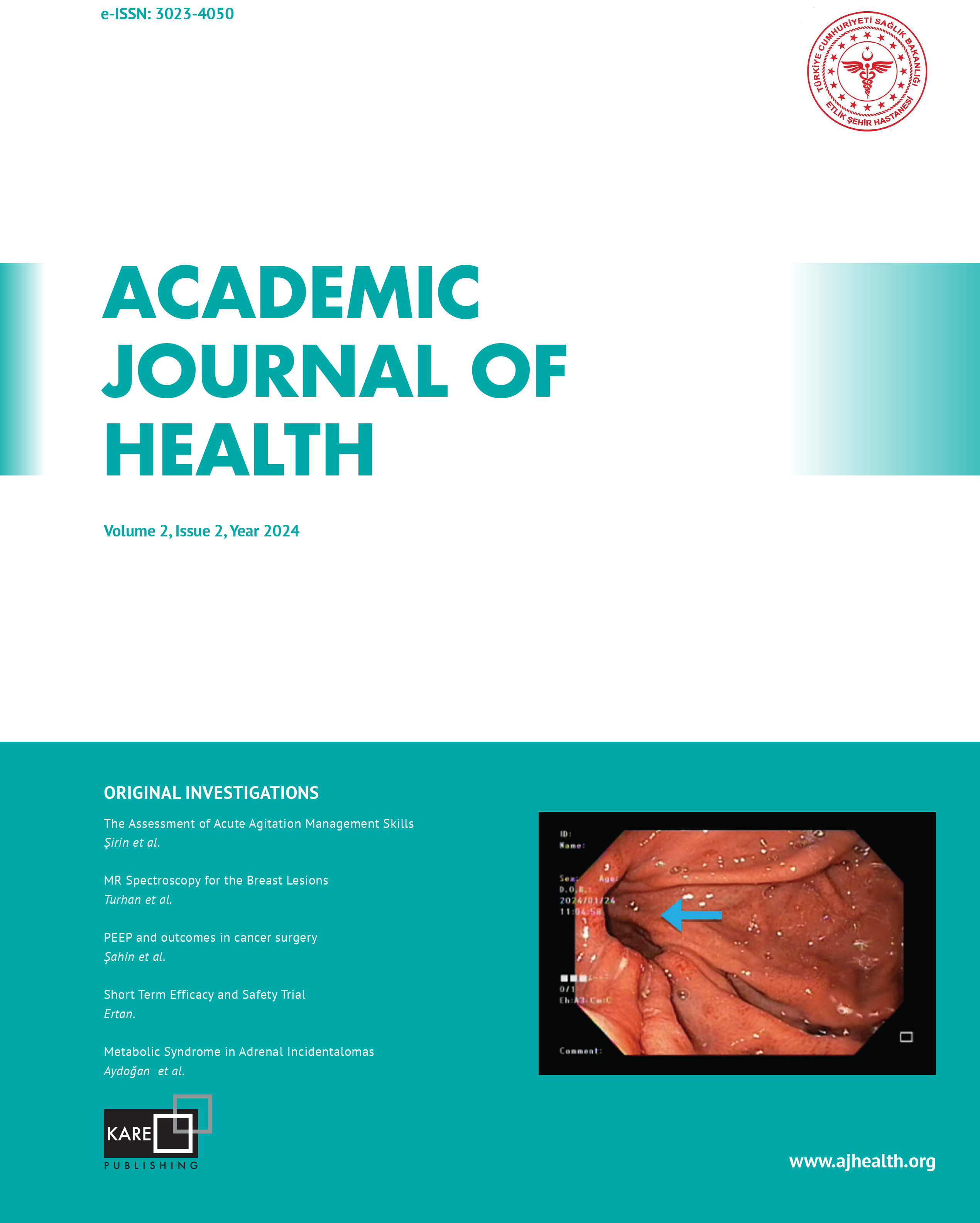Evaluation of Children Diagnosed with Mesenteric Lymphadenitis by Ultrasonography
Oğuzhan Doğan1, Melahat Melek Oğuz2, Ayşe Seçil Yücel3, Çiğdem Üner4, Hasibe Gökçe Çınar41Department of Pediatrics, Bilkent City Hospital, Ankara, Türkiye2Department of Pediatrics, Ankara Etlik City Hospital, Ankara, Türkiye
3Department of Pediatric Radiology, Bilkent City Hospital, Ankara, Türkiye
4Department of Pediatric Radiology, Ankara Etlik City Hospital, Ankara, Türkiye
INTRODUCTION: Mesenteric lymphadenitis (ML) is commonly encountered in the pediatric population. Despite its prevalence, its etiology, clinical course, and management remain under-researched. This study aimed to evaluate the etiology, clinical, and laboratory findings of ML and its correlation with lymph node size among pediatric patients.
METHODS: Patients diagnosed with ML via ultrasonography between August 2017 and July 2018 were retrospectively reviewed for inclusion in the study. Enlarged mesenteric lymph nodes were identified as those with a short axis measuring ≥5 mm. The study analyzed patients clinical characteristics, along with laboratory and ultrasonographic findings.
RESULTS: A total of 865 pediatric patients received an ML diagnosis. Among these, 9.8% were asymptomatic. The most frequently reported symptoms included abdominal pain (82.7%), vomiting (45.3%), and diarrhea (26.2%). Leading etiologies encompassed infections (28.3%), appendicitis (7.1%), and malignancy (2.3%). In 73.7% of symptomatic patients, the short axis of the mesenteric lymph node ranged between 5-8 mm. The symptomatic group exhibited a statistically significant longer mean length of the mesenteric lymph nodes long axis (p<0.05). Every clinical symptom was associated with a longer mean mesenteric lymph nodes long axis. Furthermore, the presence of feeding difficulties (OR1=8.9[6.3-15.4]) and the long axis diameter of the mesenteric lymph node (OR2=2.7[1.5-3.1]) were statistically significant independent predictors of hospitalization.
DISCUSSION AND CONCLUSION: Given that the majority of symptomatic patients have a mesenteric lymph node short axis size between 5-8 mm, we recommend adopting a short-axis threshold exceeding 5 mm when identifying enlarged mesenteric lymph nodes to minimize false negatives. The study further indicates that the long axis diameter corresponds more closely with clinical findings compared to the short axis diameter. Significantly, the long axis diameter of the mesenteric lymph node emerged as an independent predictor of hospitalization.
Manuscript Language: English




